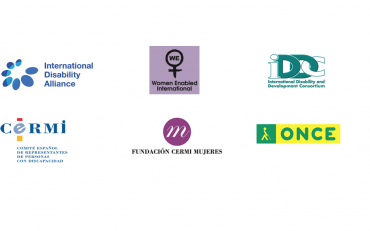The International Disability Alliance, Women Enabled International, Spanish National Organisation of the Blind (ONCE), Spanish Committee of Representatives of Persons with Disabilities (CERMI), and the International Disability and Development Consortium (IDDC) call upon States Parties to promote the representation of women with disabilities within the Committee on the Elimination of Discrimination Against Women (CEDAW Committee), reaffirming that women and girls with disabilities represent a significant part of the population of all women and that disability representation in treaty bodies must expand beyond the Committee on the Rights of Persons with Disabilities (CRPD Committee). As such, we encourage States Parties to strongly consider the election of Ms. Ana Peláez, a two-term CRPD Committee member who will provide essential expertise in addressing multiple and intersectional discrimination, to the CEDAW Committee. Elections for the CEDAW Committee will be held at United Nations headquarters in New York on June 7th, 2018.
Throughout its 37-year history the CEDAW Committee has yet to include a member who identifies as having a disability, despite the fact that an estimated one in five women worldwide lives with disabilities. Furthermore, the disability prevalence rate is much higher among women (19.2%) than men (12%) due to higher rates of poverty among women, fewer educational opportunities, poor workforce conditions, gender and disability-based violence, and neglect in health care, including sexual and reproductive health care, among other factors.[1] This means that the consequences of multiple and intersecting discrimination based on both gender and disability should be a central human rights issue for the CEDAW Committee. Indeed, due to this discrimination, women and girls with disabilities experience violations of their rights that are unique from and disproportionate to those experienced by men and nondisabled women, including, for example: higher rates of gender-based violence; unique barriers to sexual and reproductive health care and forced reproductive health interventions including forced sterilization, forced contraception, and forced abortion; higher rates of institutionalization and lower rates of education, including primary education.[2] These are urgent issues that the CEDAW Committee can and must address.
The CEDAW Committee has frequently recognized that the Convention on the Elimination of All Forms of Discrimination against Women (CEDAW) prohibits multiple and intersecting discrimination against women and girls with disabilities, and the Committee has highlighted this group as a critical population whose rights States Parties must take special measures to respect, protect, and fulfill. However, without the representation of women with disabilities on the CEDAW Committee, the rights and priorities of women and girls with disabilities remain at the margins of the Committee’s important work. Women with intersectional identities—including women with disabilities—bring a fuller understanding of human rights issues that impact women and girls. While men and nondisabled women on the CEDAW Committee can and should raise the issues of women and girls with disabilities, this cannot replace the self-representation of women with disabilities themselves, recalling the disability rights adage “nothing about us without us.” The representation of women with disabilities on the CEDAW Committee is essential to bring to light the experiences of a substantial portion of the population whose rights have often been overlooked.
On June 7th, States Parties have the opportunity to rectify the lack of disability representation on the CEDAW Committee and broaden its diversity by electing Ms. Ana Peláez as the first woman with a disability to serve on the Committee. Ms. Peláez brings not only the experience of working in the United Nations human rights system as a two-term CRPD Committee expert, but she also contributes her decades of experience in addressing intersecting discrimination among historically marginalized communities, including women and girls with disabilities. It is time now for the CEDAW Committee to truly reflect all facets of human diversity.
References:
[1] UN World Health Organization (WHO), World Report on Disability: Summary, 2011, WHO/NMH/VIP/11.01, available at: http://www.who.int/disabilities/world_report/2011/en/ [accessed 4 May 2018]
[2] UN Committee on the Rights of Persons with Disabilities (CRPD), General comment No. 3 (2016), Article 6: Women and girls with disabilities, 2 September 2016, CRPD/C/GC/3, available at: http://www.ohchr.org/EN/HRBodies/CRPD/Pages/GC.aspx [accessed 4 May 2018]
